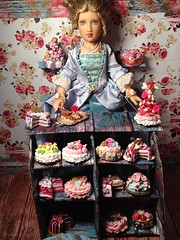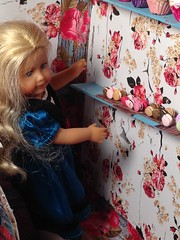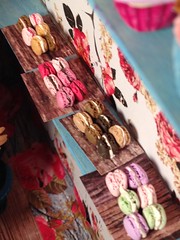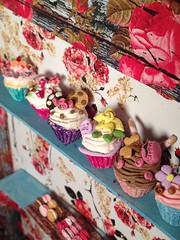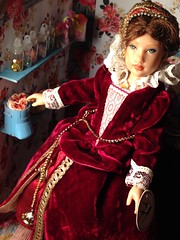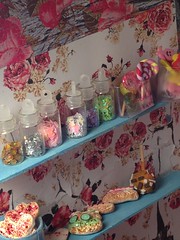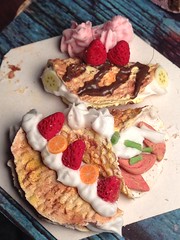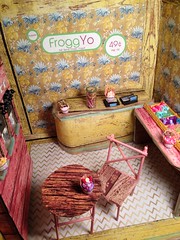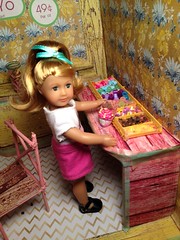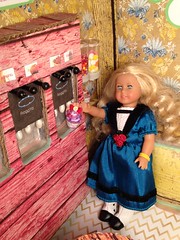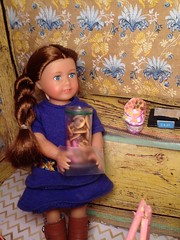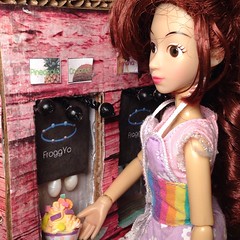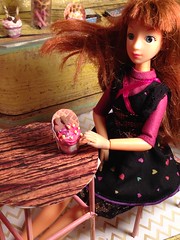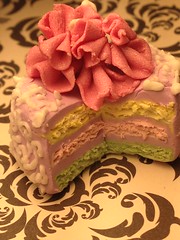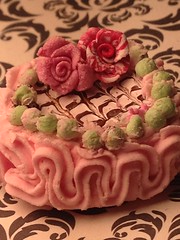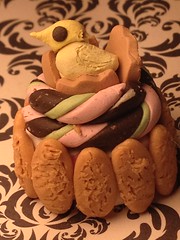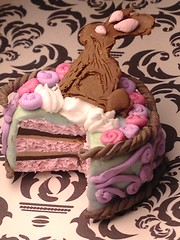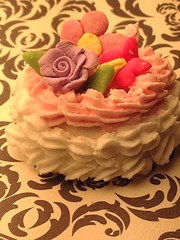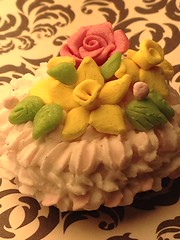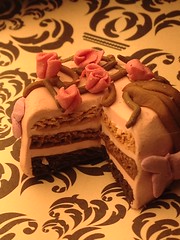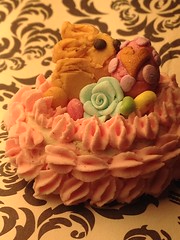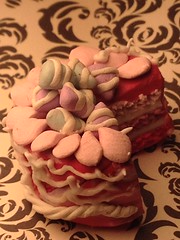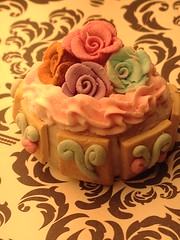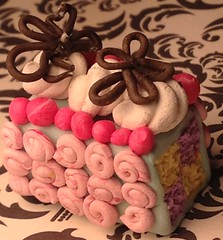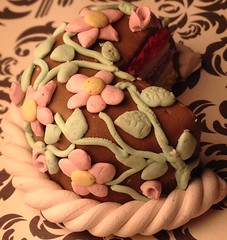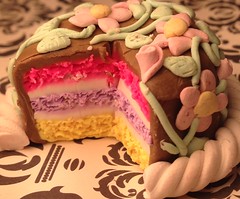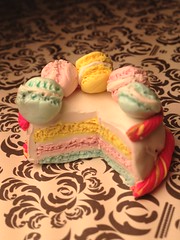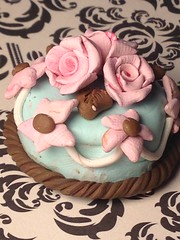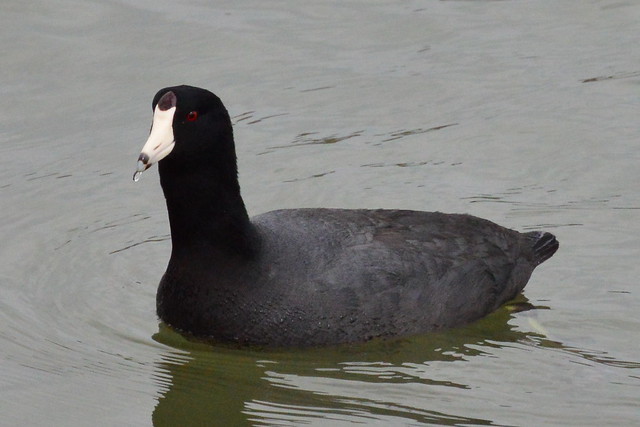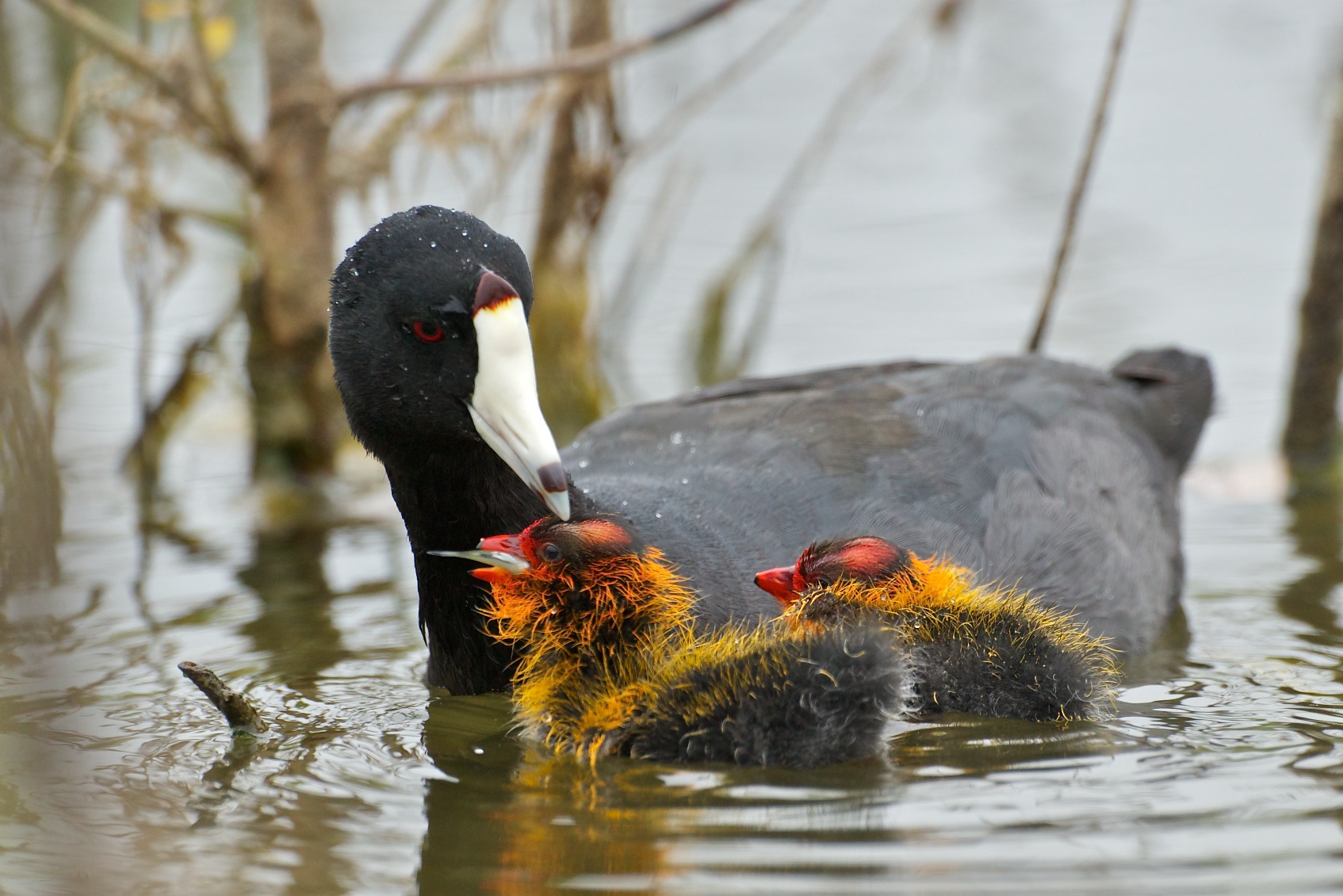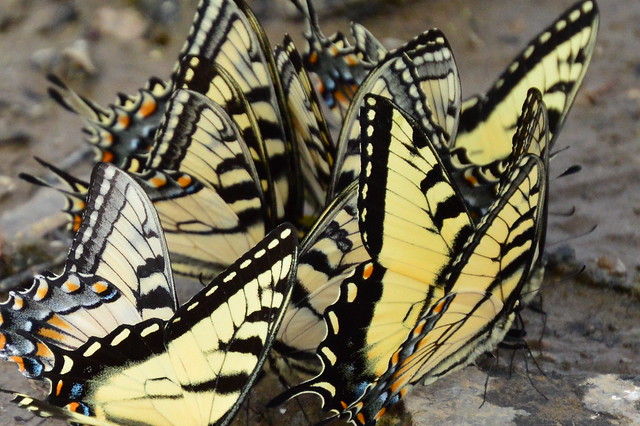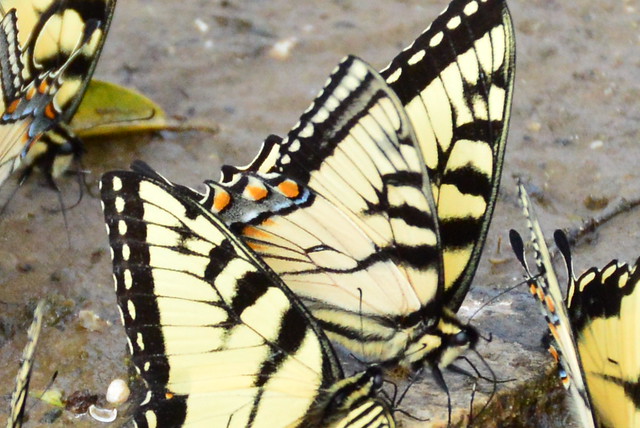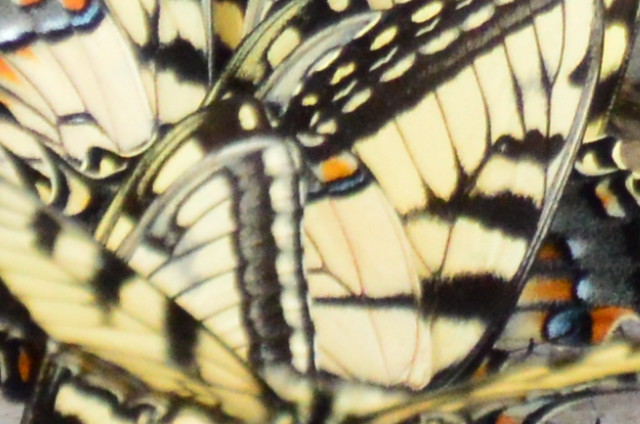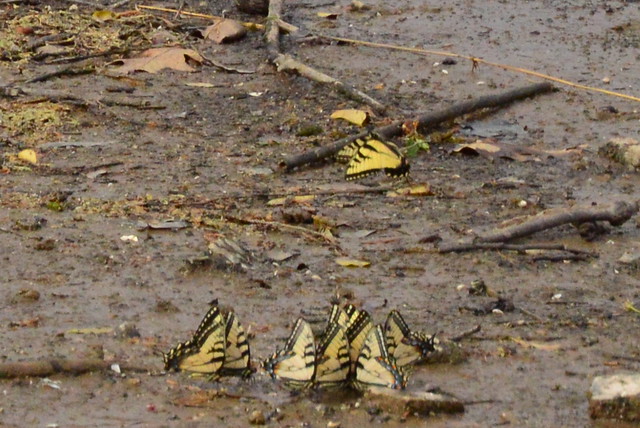Do you like cake, miniatures, or crafts? If so, you will probably enjoy this tutorial on how to make a miniature Swedish princess cake! Here is what you will need:
1. Polymer clay (white, red, gold, brown, light pink, and teal or light green)
2. Card stock paper (for making a circle cutter)
3. A toothpick
4. A polymer clay razor
5. A polymer clay extruder (optional)
Here is how to make it:
1. Make your mold for the layers by cutting out a strip of card stock paper.
2. Bring both ends together and tape. Now it should be in the shape of a circle.
3. Roll out a circle of white polymer clay. It should be about as thin as one of the layers shown in the picture.
4. Cut it with your mold, and trim the excess with scissors or your nail.
5. Repeat steps 3 and 4 for red, white, and gold polymer clay. Stack each one on top of the other.
6. Create a shallow dome out of white clay. This is the top layer, directly below the teal.
7. Place this dome on the stack of clay circles. It must reach the edges of the circles, otherwise there will be gaps when you slice it.
8. Flatten a sheet of white clay and wrap it around the sides of the cake. Trim off the excess with scissors or your nail.
9. Flatten a sheet of teal or pale green clay. Make this fairly large, because you want to cover your cake.
10. Cover your whole cake (except the bottom) with this green sheet. It is similar to covering a real cake in fondant, as shown below. Note that your cake is not flat as in the picture but domed.
11. You will probably have wrinkles or excess clay at the bottom. Trim excess with scissors, and smooth wrinkles with fingers.
12. Using a polymer clay razor, cut the cake. I suggest making faint lines in the cake for where you will cut to avoid uneven slices. Position the razor, holding it from the top. Then press it down in one stroke. You should see layers in your cake. If you do not have a razor, you can purchase one at your local craft store (found in the polymer clay section), or online. A sharp knife may work as an alternative, but scissors do not!
13. Now it's time to decorate! To make the chocolate swirls, I used a polymer clay extruder:
If you do not have one, you can simply roll a long, thin strand of clay with your hand.
14. Loop the brown clay strand in a design of your choice.
15. Make the rose out of light pink polymer clay, red clay, or red and white clay mixed thoroughly together. Make the rose as shown below:
16. Make two roses, placing one on the cake and the other on the slice.
17. Make the border by rolling two strands of white clay. Twist them around each other and wrap them around the cake.
You have made your princess cake!
